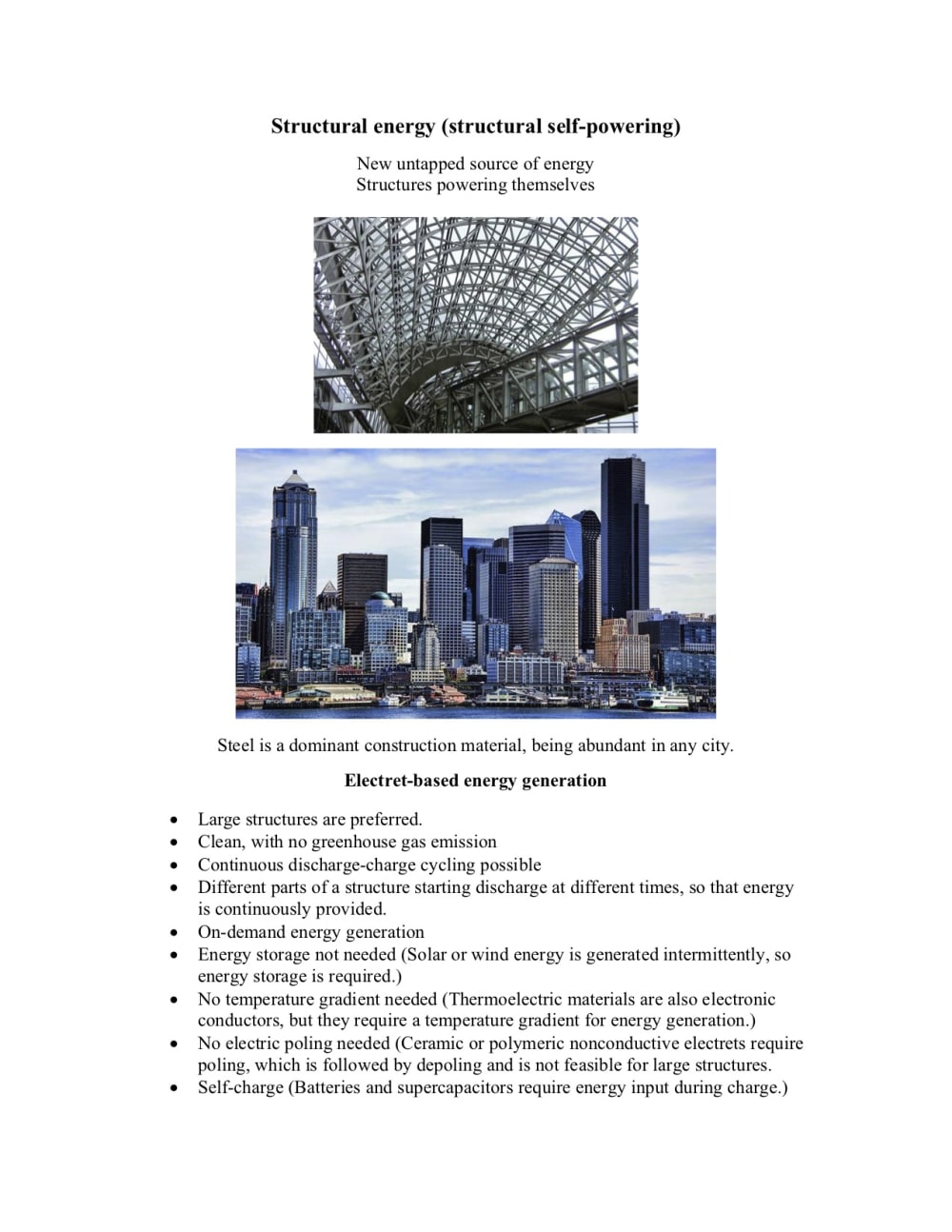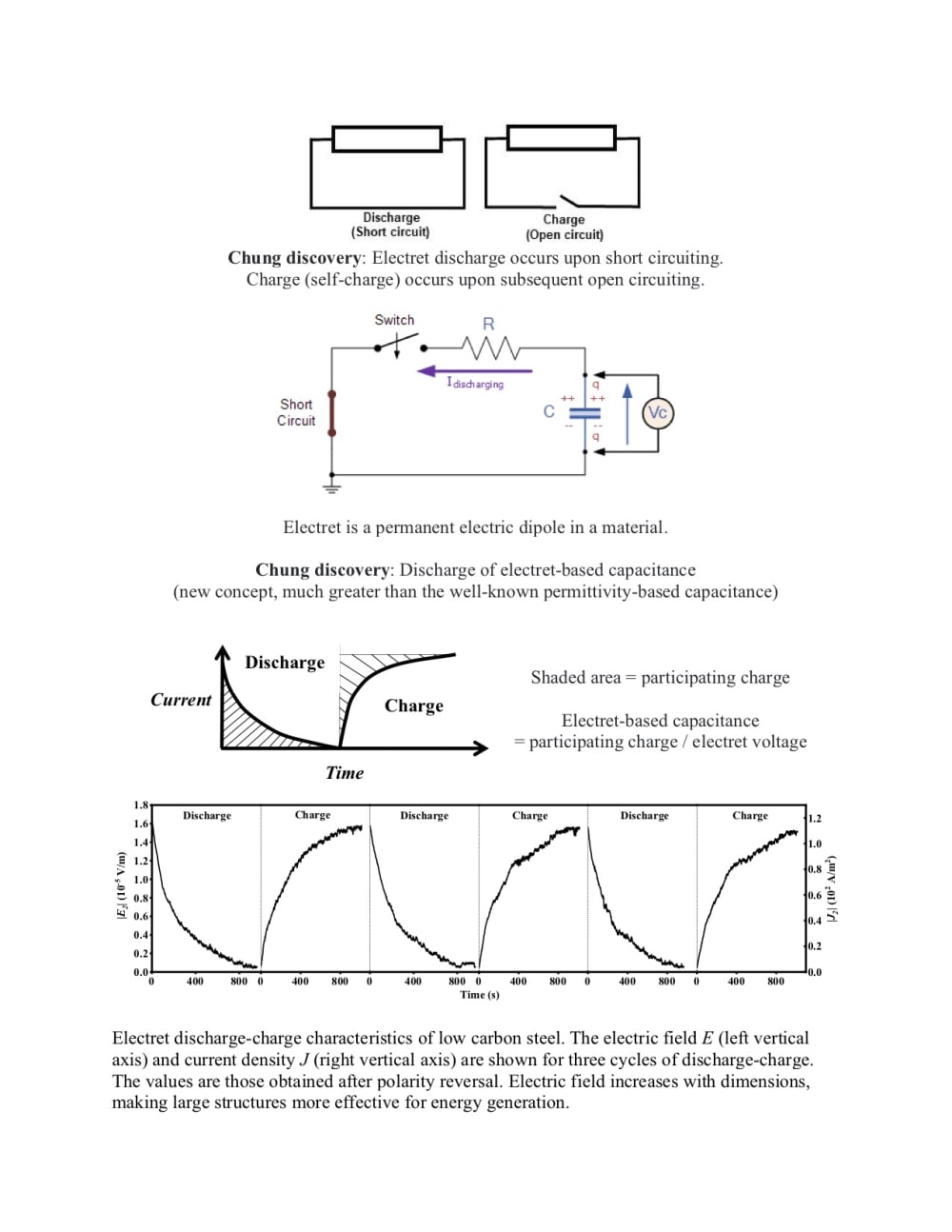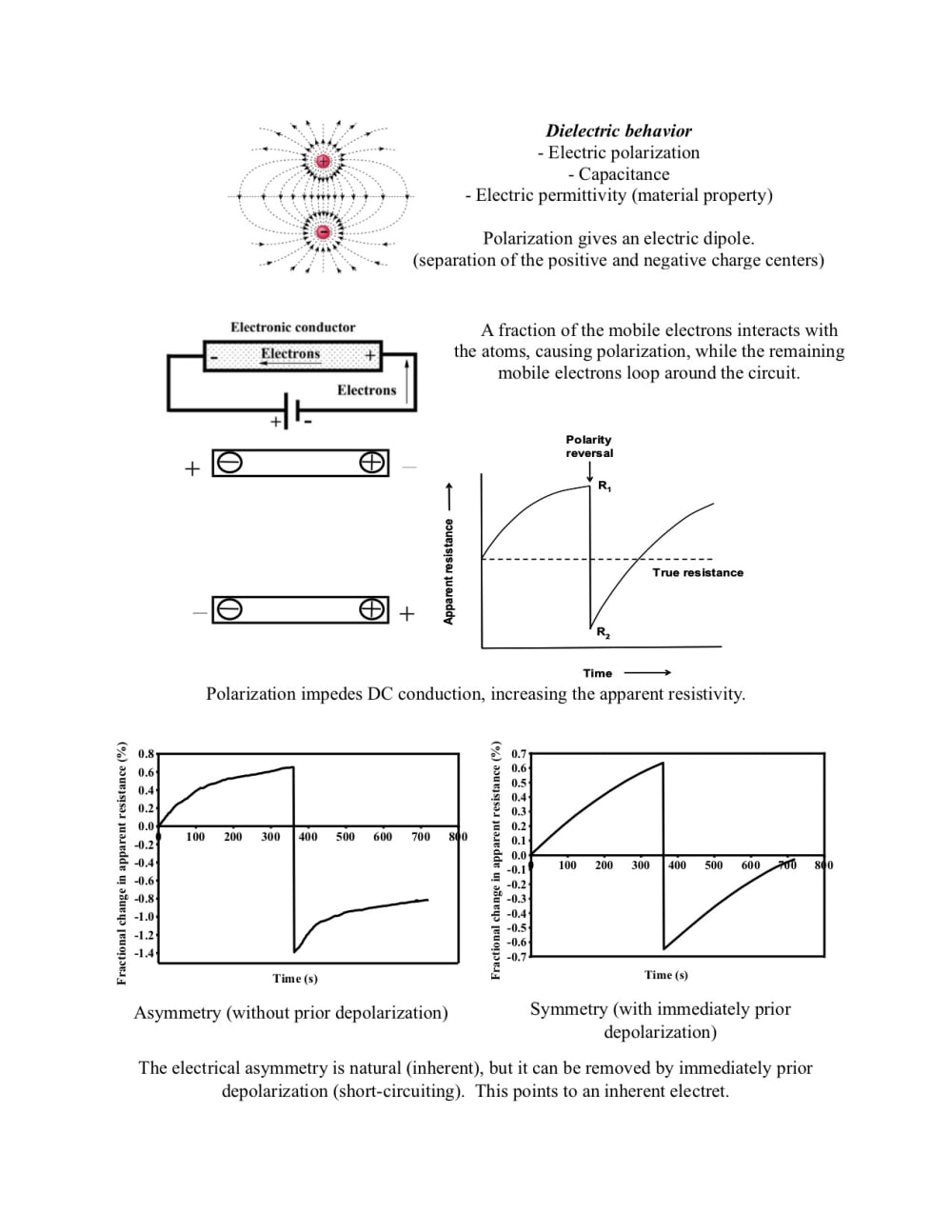This innovation provides a new untapped source of energy, namely clean energy provided by the civil infrastructure, such as the steel in buildings. It is based on new science developed by Chung, who discovered this energy source in 2019. A patent with Chung as the inventor has been issued (U.S. 11081285). The science has been published by Chung in peer-reviewed professional journal papers.
The steel does not need modification, so the technology is applicable to existing and new buildings. The larger is the structure, the more is the energy generation. To implement the technology, two electrodes need to be applied to each piece of the material.
The structural material must be electronic conductors, i.e., electrical conductors with electrons as the mobile charges. Steel, aluminum and other metals are electronic conductors, so the technology is not limited to steel.
The conduction behavior pertains to the ability to conduct electricity. The dielectric behavior pertains to the tendency for the material to be polarized electrically, so that there are positive and negative ends. The conduction behavior is well-known for conductors (metals and carbons), whereas the dielectric behavior is well-known for non-conductors (ceramics and polymers). Electronic conductors are known for their conduction behavior, but their dielectric behavior has escaped attention until Chung’s work.
The dielectric behavior of conductors stems from the interaction of a small fraction of the mobile electrons with the atoms. Electric poling (application of an electric field) is not needed. The electronic conductors exhibit electret behavior (discovered by Chung). The electret provides a voltage while allowing current to pass through, thus acting as an energy source. The electret discharges upon short circuiting and charges back upon subsequent open circuiting. This means self-charge, which is enabled by the fact that the charged state is thermodynamically stable. As shown by Chung’s experimental work, the discharge time relates to the RC time constant, where C is not the conventional permittivity-based capacitance, but is the electret-based capacitance defined by Chung as the electret charge (determined by discharge testing) divided by the electret voltage V. The electret-based capacitance is huge compared to the permittivity-based capacitance. As shown by Chung experimentally, the electret discharge energy is given by the discharge energy of the electret-based capacitance (CVV/2, where C = electret-based capacitance, a new concept due to Chung). The voltage V increases with the dimensions, so large structures are advantageous.
The electret behavior enables unprecedented structural self-powering in the absence of device incorporation. Self-powering means the structure providing electric power. Due to the abundance of existing structures, the energy generation is substantial. The attractive self-charge of the new energy source is in contrast to the undesirable self-discharge of batteries, the thermodynamically stable state of which is the discharged state. Furthermore, the new energy source is low-cost, environmentally friendly and long in service life, in contrast to the chemical and fire hazards, and limited service life of batteries. In contrast to wind and solar energy, no energy storage is needed, because the energy is continuously generated.
Like this entry?
-
About the Entrant
- Name:Deborah Chung
- Type of entry:individual
- Software used for this entry:Not applicable
- Patent status:patented








